Made from the zest and flesh of lemons, lemon marmalade can be used in a variety of ways. This recipe uses an easy water bath process to make a shelf-stable product to add to your pantry.
New to canning? Be sure to read about basic canning equipment and how it works.
Brightly Flavored Lemon Marmalade
The trademark puckery flavor of fresh lemons is tamed with the addition of sugar in this recipe – but not too much! Make up a batch when lemons are in season so you can enjoy this marmalade year round.
The Handcrafted Pantry

Ready to DIY your pantry with more wholesome ingredients? Check out my ebook, The Handcrafted Pantry! Filled with delicious recipes for some of your favorite condiments, snacks, and toppings, it’s the guide you need to start skipping packaged products and embrace homemade.
What is Marmalade?
Typically made with citrus fruits, marmalade is different from jams and jellies in that it’s made with the somewhat bitter skins. Orange marmalade is probably the most common type of marmalade.
This tangerine marmalade with ginger and vanilla offers the option of leaving the skins out, thus becoming jam.
You aren’t likely to find lemon marmalade in grocery stores, though it may be available in gourmet or specialty shops. Making homemade marmalade is the solution!
5 Easy Steps to Transform Your Pantry!
Ready to switch from store bought to homemade? Let me help you make some changes! Grab my FREE five-part guide to getting started.
Marmalade inspires such passion that aficionados can attend The World’s Original Marmalade Awards in the United Kingdom every year, where citrus marmalade recipes from around the world vie for top place.
Artisan marmalade recipes often require overnight processing and because of the natural pectin in citrus, they’r often made without added pectin.
This recipe uses the shortcut of commercial pectin so you can be enjoying this citrusy spread in much less time! Scones optional.
Ingredients
Lemons — Choose fresh, juicy large lemons. If you have some growing on a tree, by all means harvest those. If not, store-bought lemons are fine. This recipe is for regular lemons; it has not been tested for safety/pH with the sweeter, less acidic Meyer lemons.
Sugar — Use your favorite brand of granulated cane sugar. I prefer organic.
Pectin – This recipe is made using Pomona’s Universal Pectin. This is the only pectin I use anymore as it allows me to use much less sweetener. The standard pectin brands use an obscene amount of sugar in my opinion, often requiring equal amounts of sugar and fruit! This product uses a low methoxyl method and calls for using two different ingredients, which are included in the box: pectin (the large packet) and calcium powder (the small packet). The dry pectin is mixed with the sweetener before being added to the fruit. The calcium water is added directly to the fruit.
Making the Marmalade
Use a fruit peeler to remove just the zest — the yellow part — of the peel from about the lemons. Avoid the white pith, as this causes excessive bitterness. Cut the zest into thin slices.
Once the zest is removed, peel the lemons, again removing as much of the white pith and membranes as possible. Once peeled, slice the fruit in half to reveal the seeds. Remove as many seeds as possible, but know that you’ll still likely find a few floating in the fruit mixture as you’re cooking it! (Use a spoon to lift those out.)
Chop the lemon segments into pieces. If you do this on a rimmed tray, you can capture the lemon juice and add it to the solids.
Cook the lemon pieces and peels along with the water. While that’s cooking, combine the sugar with the pectin.
Measure six cups of the fruit pulp and bring to a boil. Add the sugar and pectin, returning the mixture to a boil.
At this point, you have a finished product. You can transfer the hot marmalade to jars and simply store in the fridge for up to six weeks, or freeze for up to a year. If you intend to freeze the marmalade, be sure to allow enough headspace for expansion as it freezes.
Canning this Marmalade Recipe
This recipe measured at a pH of about 3.0, putting it well into the “safe” zone for water bath canning.
You’ll need special canning jars, lids, and rings (read more about canning equipment here) to make this mango jam shelf-stable, but the process isn’t difficult.
Once the jars are filled with hot marmalade and covered with a lid, you’ll process them in a water bath. What this means is you’ll put the filled and sealed jars of jam into boiling water and heat them for ten minutes. This assures that the jars will seal well.
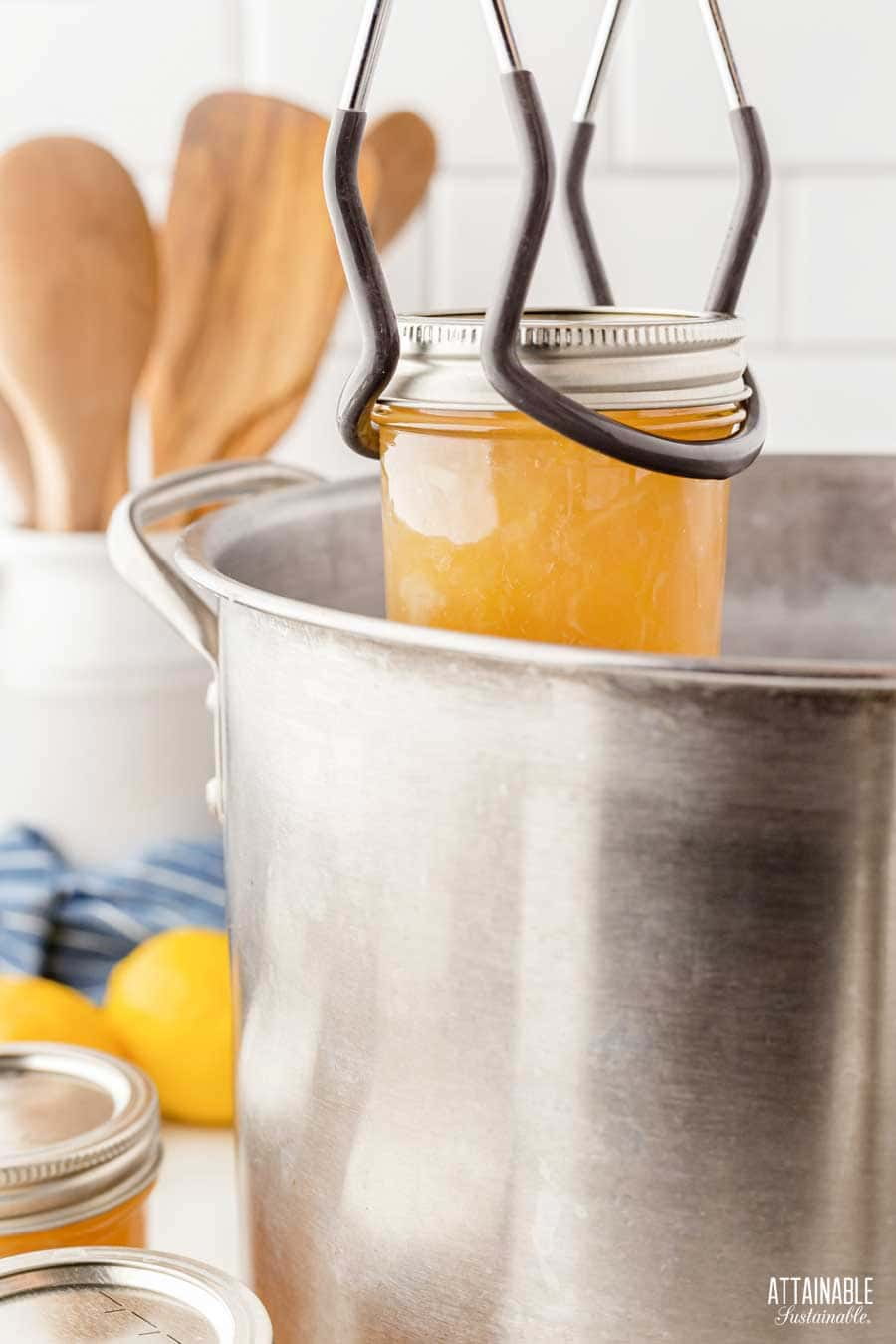
Remove the ring from each sealed jar, rinse to remove any jam residue, and store (without the ring) in the pantry.
🍅 Safety First!
Canning is an excellent way to preserve food for the pantry, but there are some important safety considerations to keep in mind. The recipes on this site have been made following safe canning procedures by a certified Master Food Preserver.
- Know the difference between water bath canning and pressure canning. Low acid items must be pressure canned for safety.
- Altering ingredients may change the recipe’s pH, posing a safety issue. I highly recommend investing in pH paper to test your products for acidity level when canning. Note: For safe water bath canning, the Hawaii Master Food Preservers suggest a pH of 4.2 or lower in the tropics. In other regions, the recommended pH is 4.6 or lower.
- Use the proper jars and lids. Never reuse lids, with the exception of the Tattler or Harvest Right hard plastic lids that are intended for such a purpose.
- For more on canning equipment, please go here.
- Want to learn more? The National Center for Home Food Preservation is the go-to resource for safe canning information.
How to Use Lemon Marmalade
Now that you’ve stocked your pantry with jars of this delicious marmalade, you’ll be able to use it in a variety of ways. It works well for both sweet and savory applications.
- Lemon marmalade is perfect for spreading on toast or English muffins for a quick and easy breakfast.
- Use it as a glaze for grilled or roasted meats like ham or chicken. Heating the marmalade makes it easier to baste it on the meat.
- Stir some into plain yogurt or spoon a little onto your breakfast oatmeal.
- Use it as a filling for cakes or cookies.
- Mix it into marinades or salad dressings to add a sweet and tangy flavor.
- Pour over cream cheese, garnish the plate with lemon slices, and serve with crackers for an easy last-minute appetizer.
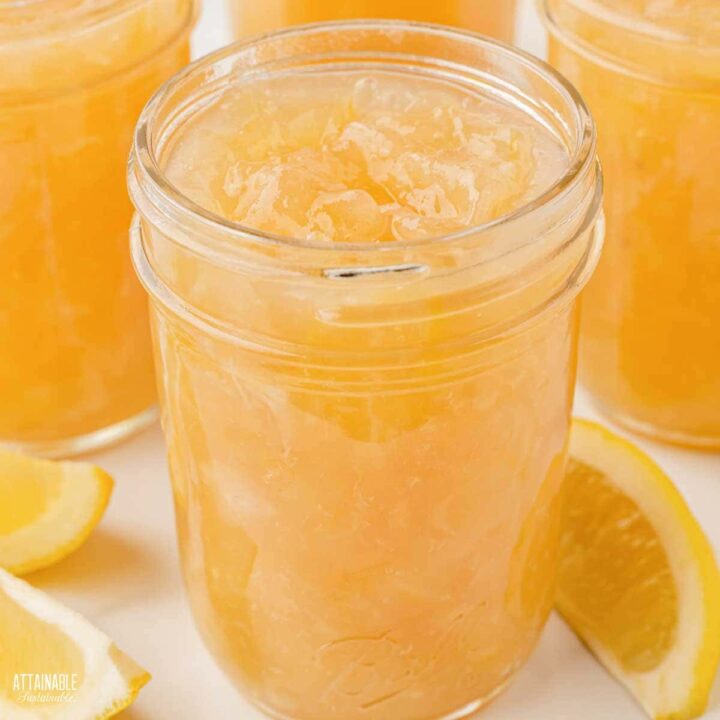
Lemon Marmalade
This easy marmalade recipe can be used like any of your favorite jam recipes as a topping for toast. But this delicious recipe is also great as a glaze for grilled meats or stirred into marinades.
Ingredients
- 8 lemons (not Meyer lemons)
- 3½ cups of water
- 4 teaspoons calcium water (from Pomona's Pectin package)
- 3 cups of sugar
- 5 teaspoons pectin (from Pomona's Pectin package)
- 2" knob of ginger (optional)
- 2 cinnamon sticks (optional)
Instructions
PREP FOR CANNING
- Prepare calcium water from Pomona pectin. Put 1/2 teaspoon calcium powder (the small package) and 1/2 cup water in a small jar with a lid. Shake well before using.
- Wash the jars you'll use in hot soapy water, making sure clean jars are free of nicks in the rim, which could impede sealing.
- Place empty jars in a canning pot with enough water to cover by an inch or two, cover pot, and set on high heat. It can take awhile for the water to heat, so get it started before you begin making the recipe.
- Wash canning lids and rings in hot water; set aside.
MAKE THE MARMALADE
- Wash lemons and use a vegetable peeler to remove just the yellow portion of the skin from 4 of the lemons. Use a sharp knife to cut these into narrow strips, 1” long. Set aside.
- Remove the white pith from these lemons, and the entire peel from the remaining four. Chop lemon segments into 1/4-1/2” pieces.
- Combine the chopped lemon, lemon peel, and water (along with ginger and cinnamon if using) into a large saucepan. Bring to a boil, reduce heat, and simmer for 20 minutes, stirring occasionally.
- Transfer hot mixture to a mixing bowl; discard ginger and cinnamon. Measure 6 cups of the fruit mixture back into the saucepan along with the calcium water. Stir well and return mixture to a filling boil over high heat.
- Meanwhile, combine the sugar with the pectin until it's thoroughly combined.
- When the lemon mixture comes to a boil, stir in the pectin and sweetener, stirring vigorously for 1 to 2 minutes to dissolve the pectin while bringing the jam back to a boil. Remove from heat when the jam boils.
CANNING THE MARMALADE
- Ladle hot jam into quarter-pint, half-pint, or pint sized jars, leaving 1/4" head space. A canning funnel makes this easy.
- Wipe jar rims to remove any jam that may have spilled. A clean rim is essential to a good seal.
- Set jar lids in place. Screw bands on finger tight.
- Use a jar lifter to gently submerge jars into hot water in the canning pot. Water should cover the top of the jars by an inch. The water will cool somewhat in reaction to the addition of the jars. Return the water to a simmer and then set the timer.
- Process jars for 10 minutes 0-1,000 feet altitude; add an additional minute for every additional 1,000 feet in elevation.
- Remove jars from the boiling water bath using the jar lifter and transfer to a solid, towel-covered surface. Allow to cool for 24 hours.
- Check seals. Lids should be solid and pulled down tight. (if they flex and pop, the jar didn’t seal; put unsealed jars in the refrigerator and use those first).
- Remove rings and wash outsides of jars. Store in a cool place.
Notes
This recipe is made using Pomona’s Universal Pectin. This is the only pectin I use anymore as it allows me to use much less sweetener. The standard pectin brands use an obscene amount of sugar in my opinion, often requiring equal amounts of sugar and fruit! This product uses a low methoxyl method and calls for using two different ingredients, which are included in the box: pectin (the large packet) and calcium powder (the small packet).
For a spicy marmalade, stir 1/2 teaspoon of red chili flakes into the lemon mixture after adding the pectin.
Store sealed jars in a cool, dark place at room temperature. Once opened, marmalade will keep in the fridge for up to 6 weeks.
SOURCE: Adapted from Pomona's Universal Pectin.
Nutrition Information:
Yield: 112 Serving Size: 1 tablespoonAmount Per Serving: Calories: 23Total Fat: 0gSaturated Fat: 0gTrans Fat: 0gUnsaturated Fat: 0gCholesterol: 0mgSodium: 1mgCarbohydrates: 6gFiber: 0gSugar: 6gProtein: 0g

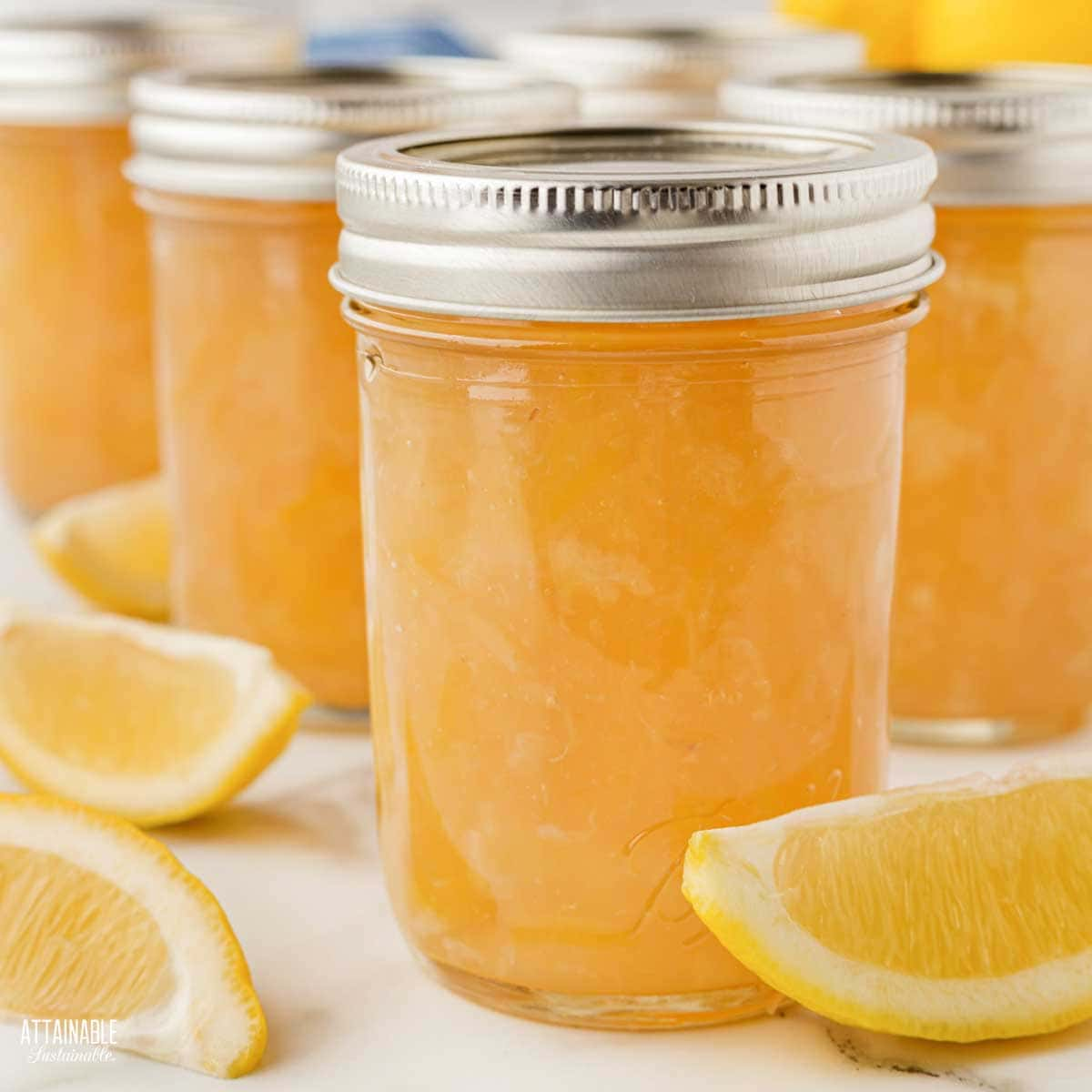
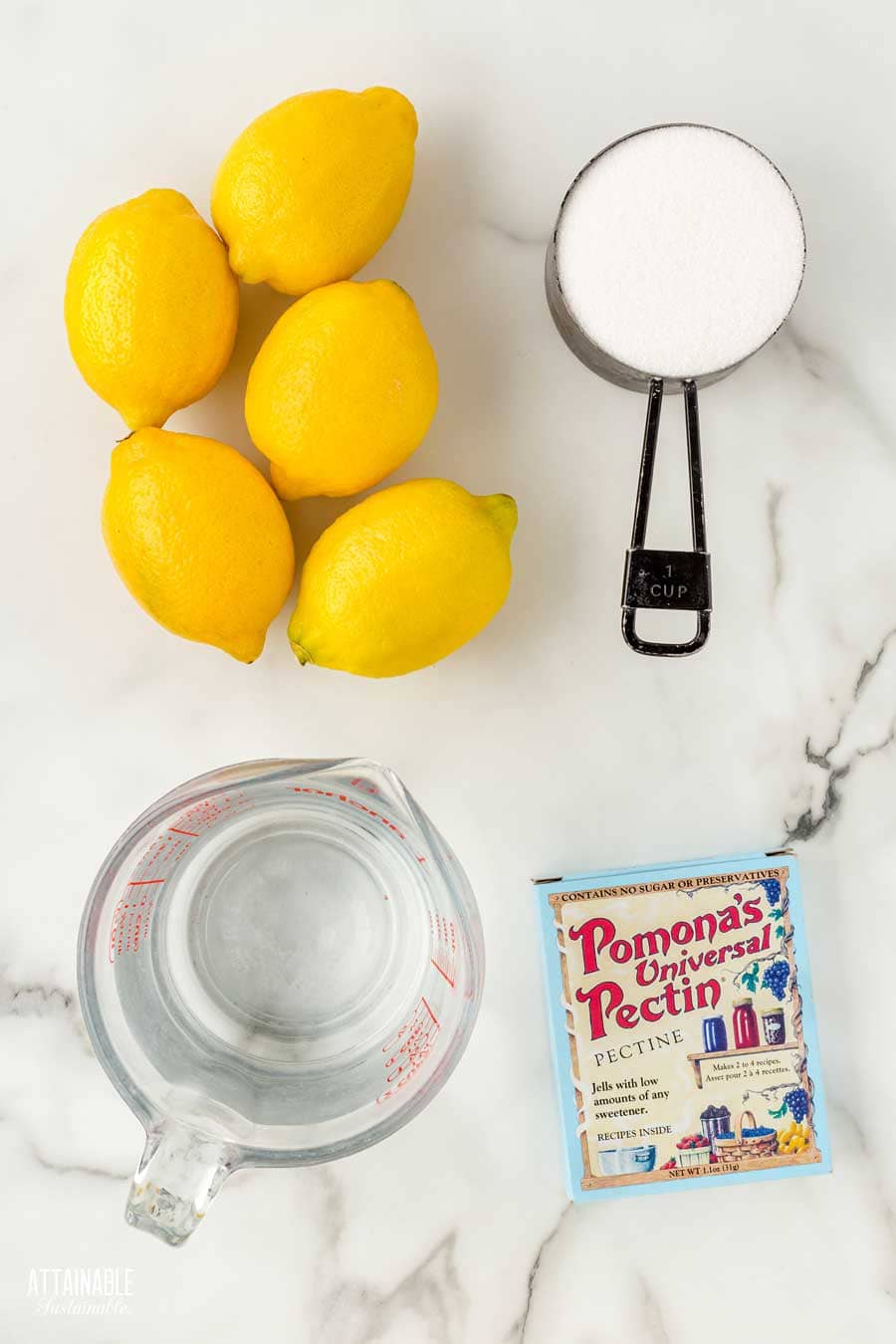
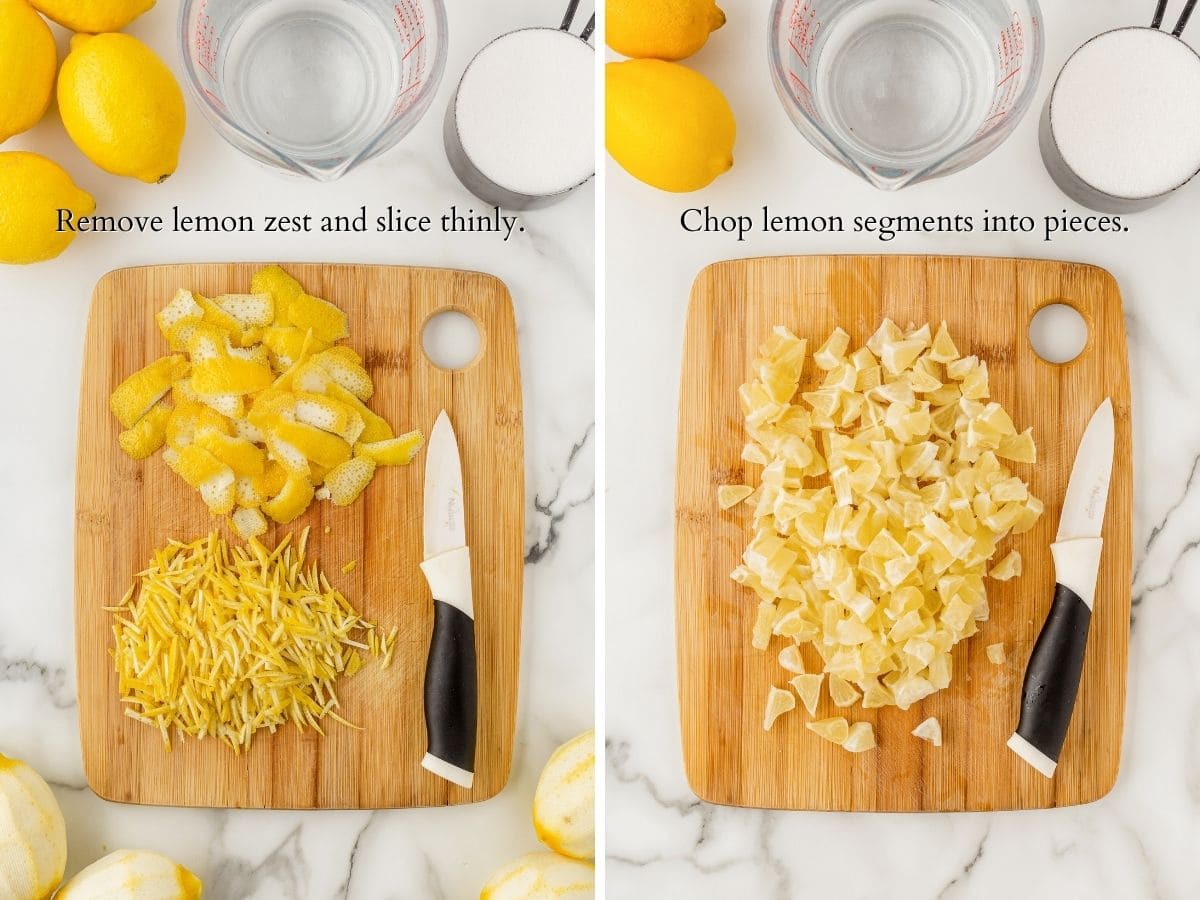
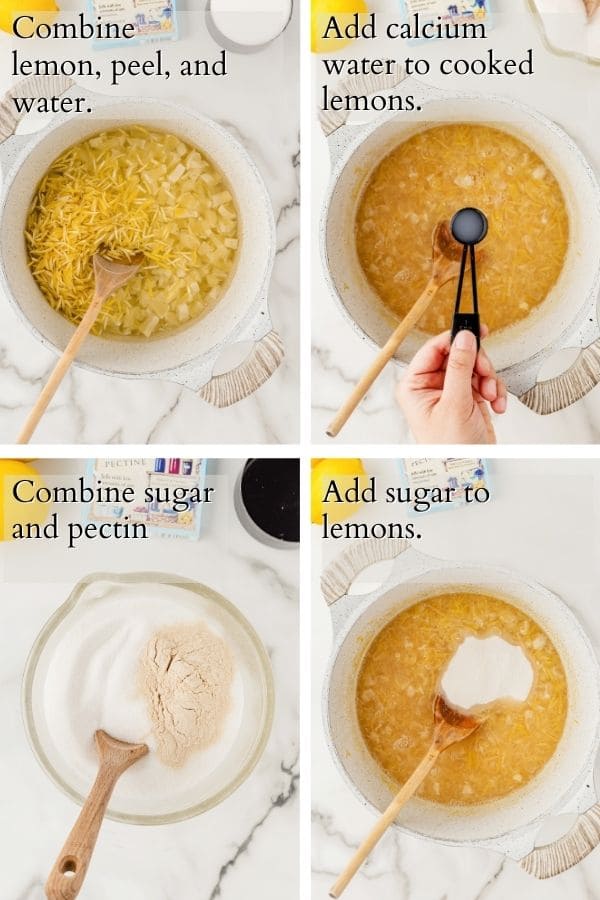
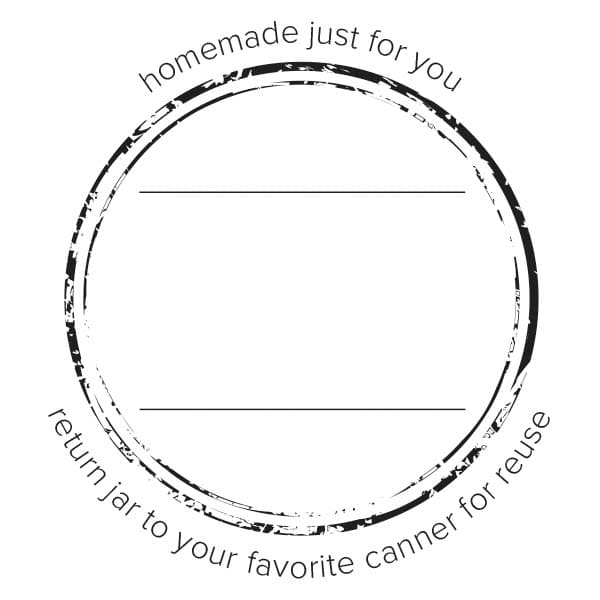
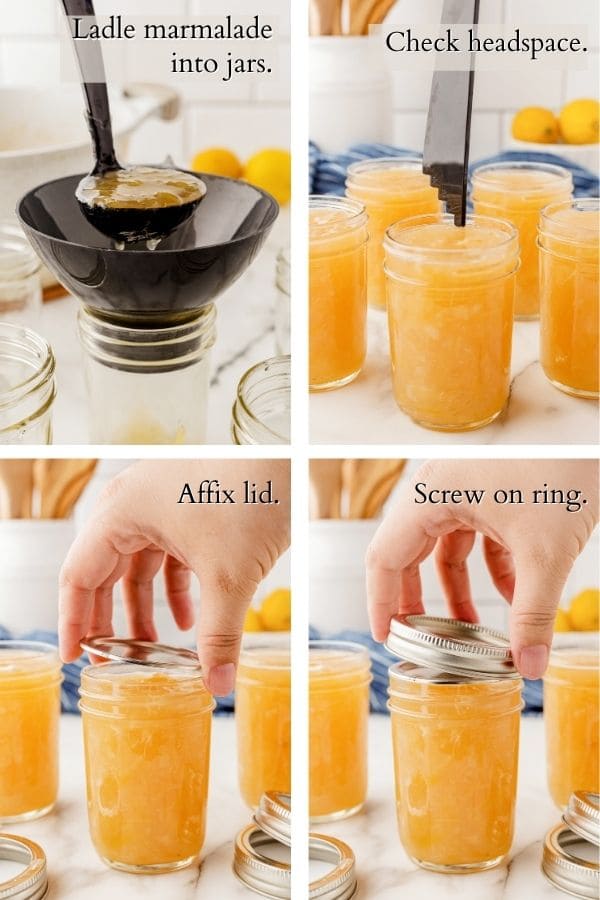
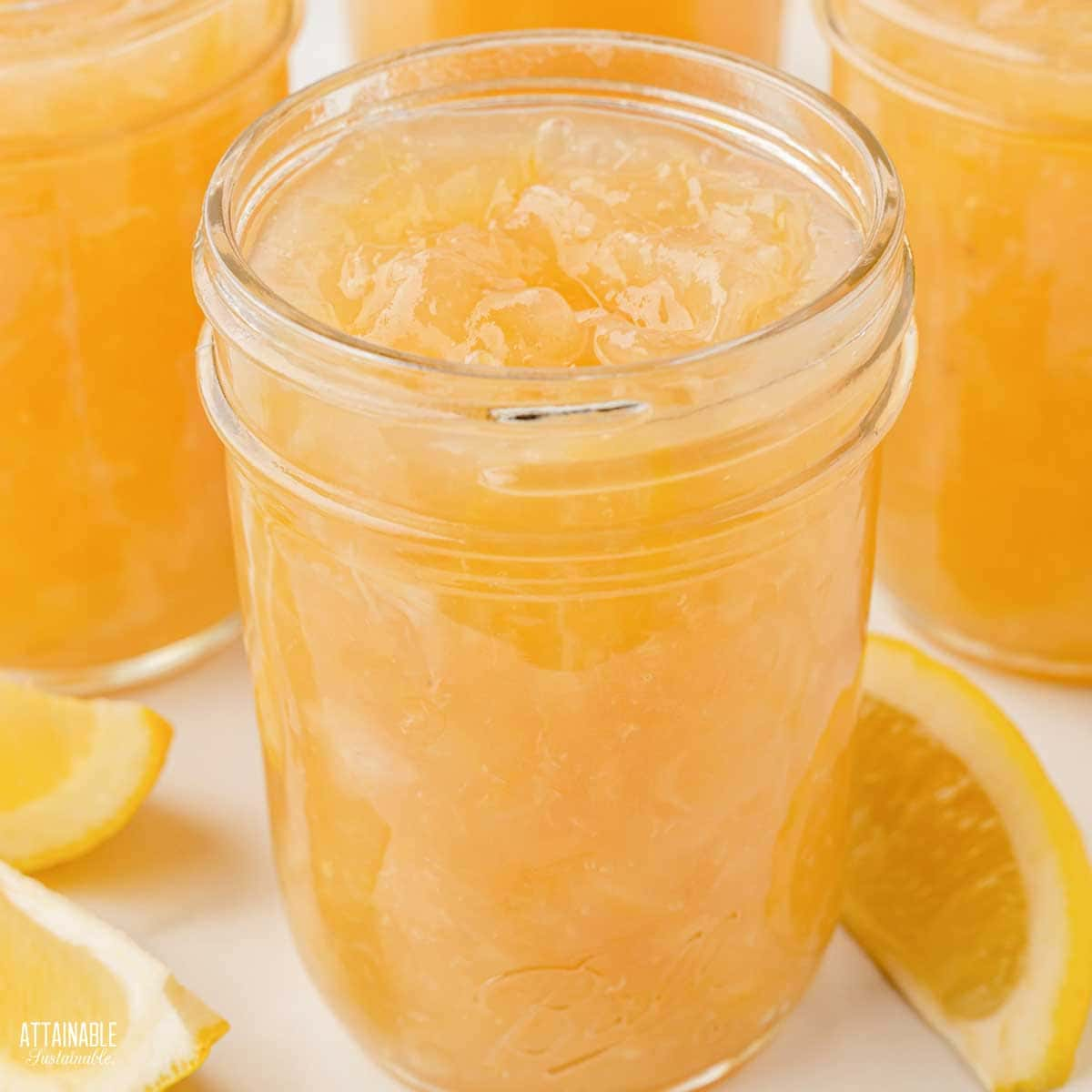
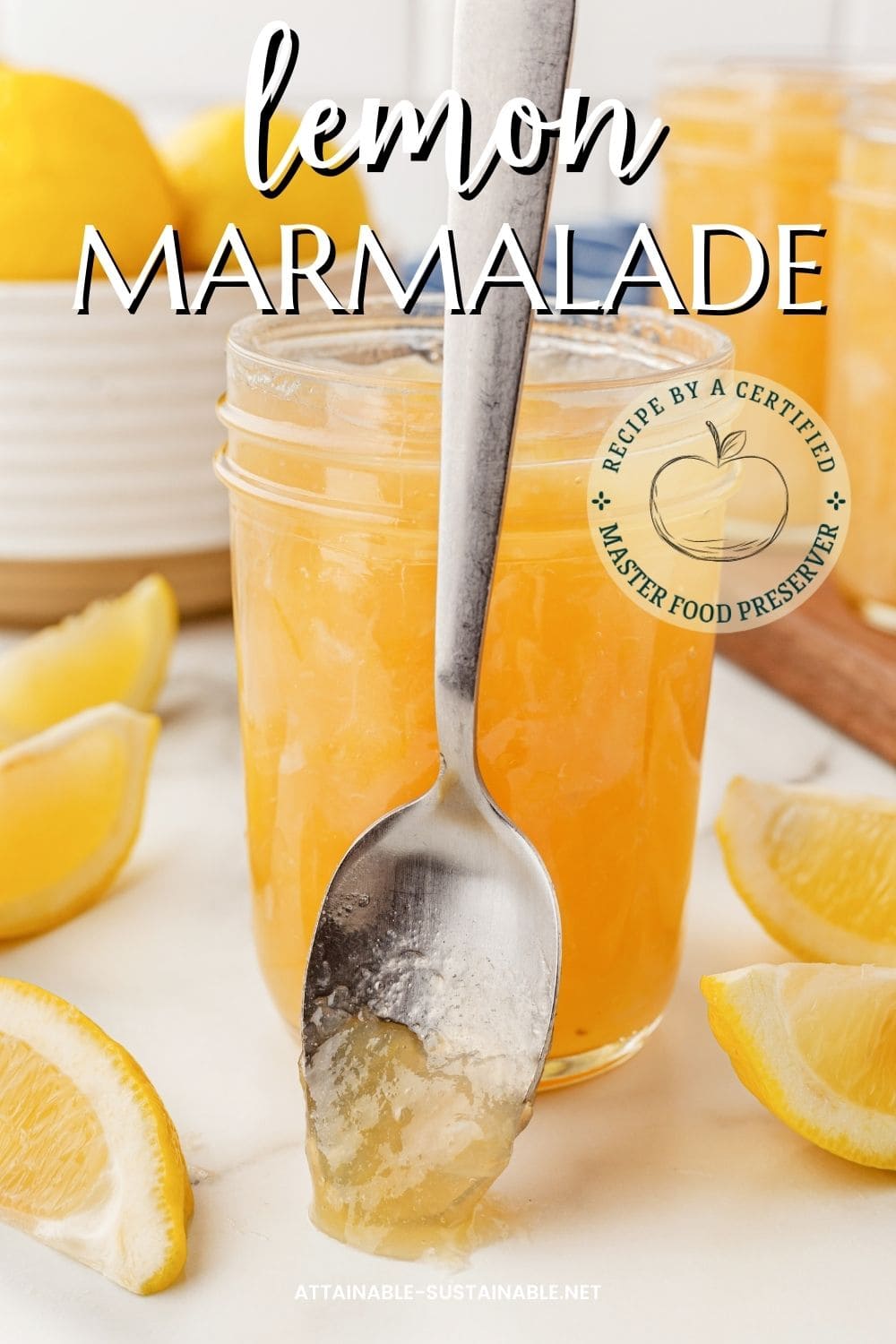





I have some Pomona Pectin that I have been meaning to give a try. Marmalades are my jam (pun intended)! And lemon is my favorite flavor year round but so refreshing in the summer. I cannot wait to give this a try. It must be just what I was waiting to help kick off what I hope will be a busy season of preserving good foods for our pantry.
Perfect, I hope you love it!